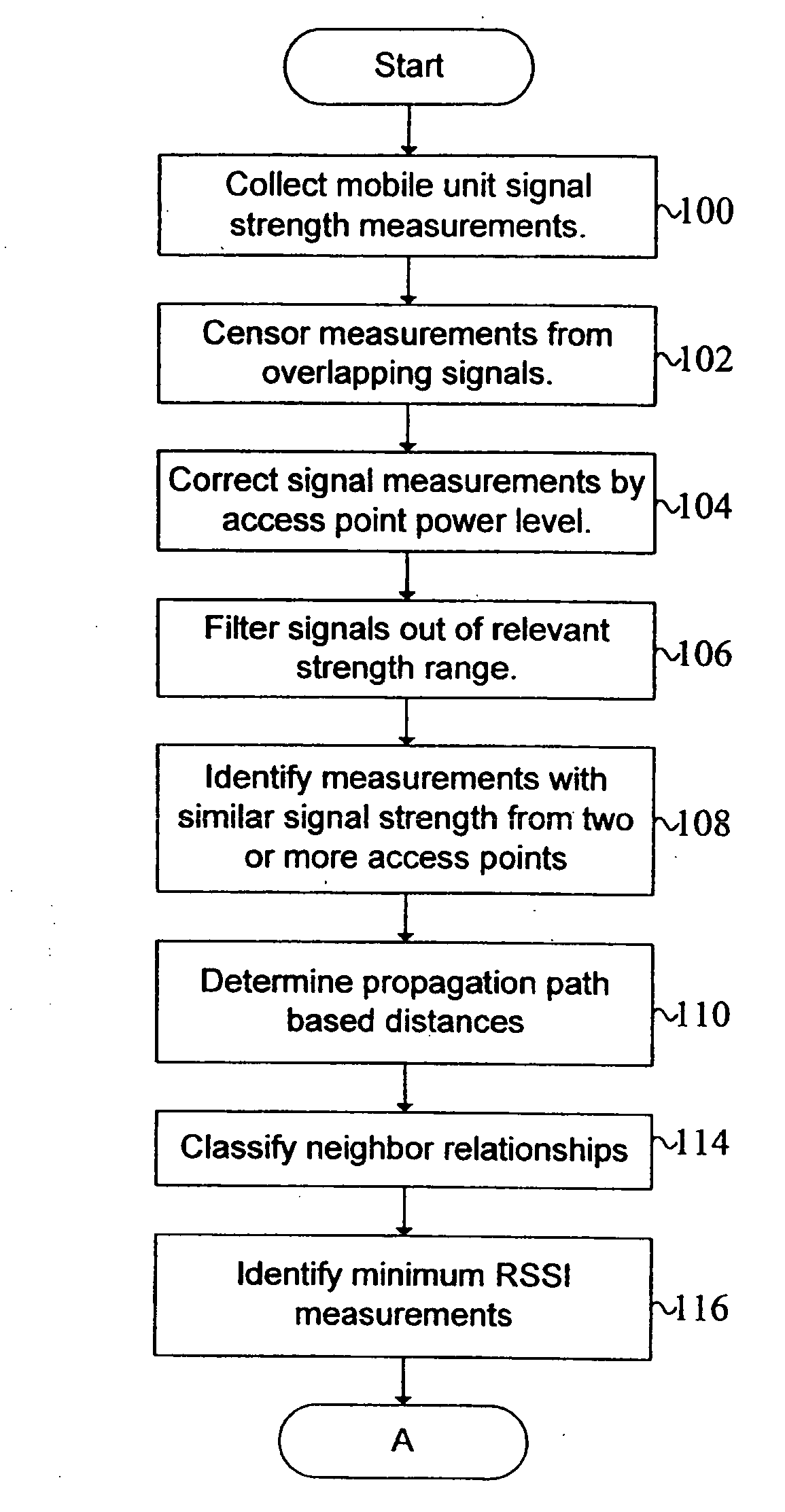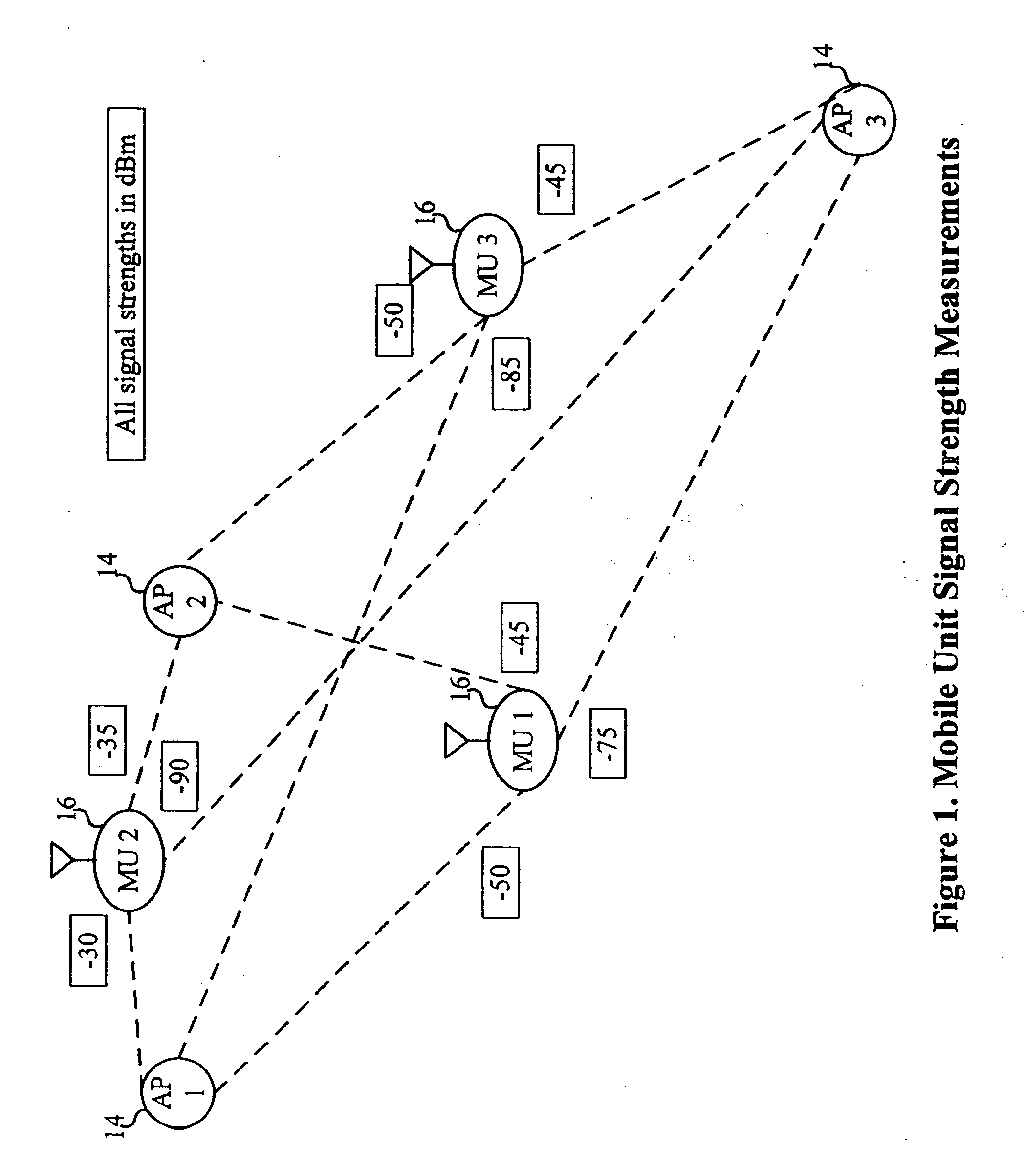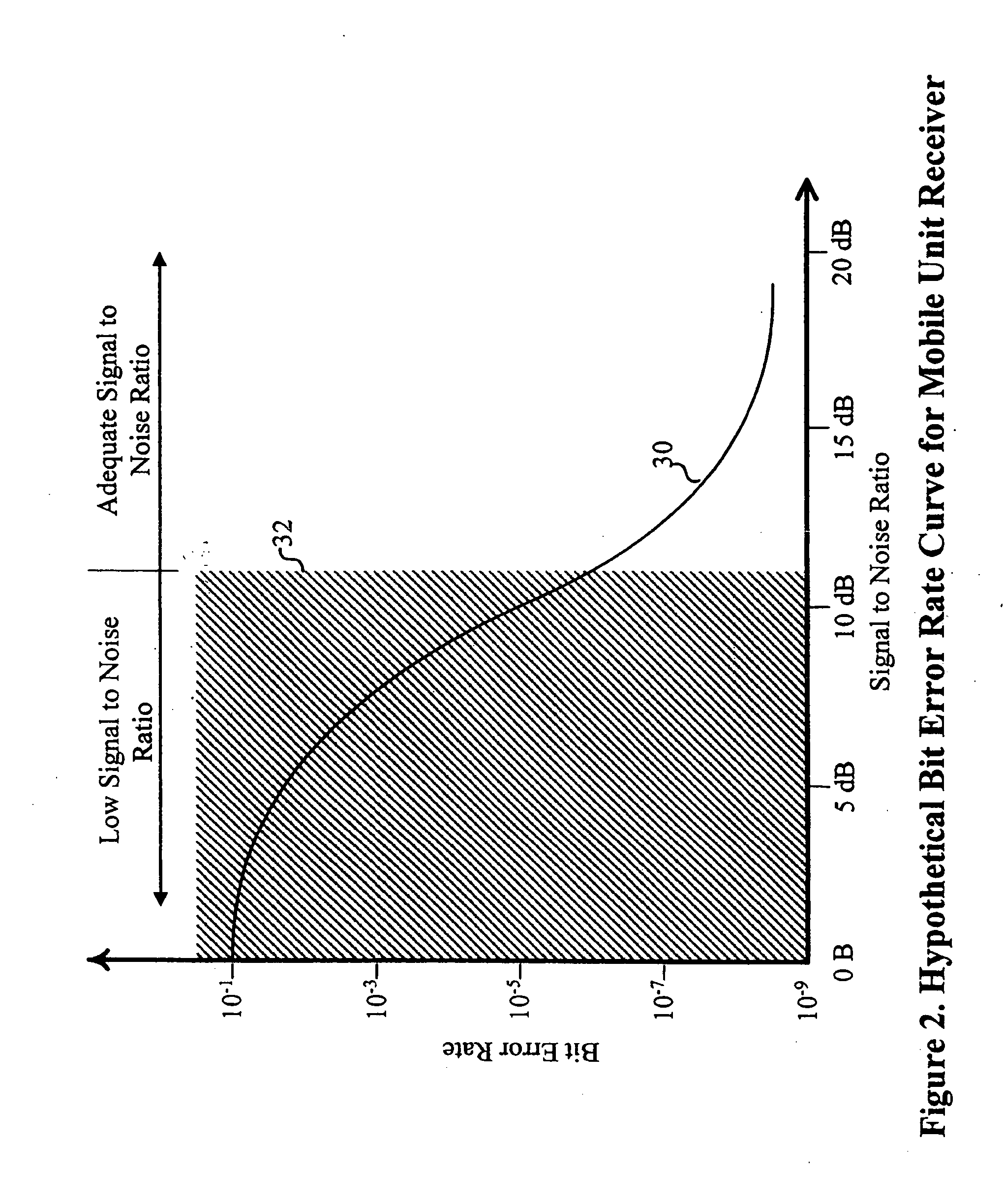Channel, coding and power management for wireless local area networks
a wireless local area network and wireless technology, applied in substation equipment, electrical equipment, network topologies, etc., can solve the problems of low network data throughput and mutual interference, and achieve the effect of reducing network throughput and increasing mutual interferen
- Summary
- Abstract
- Description
- Claims
- Application Information
AI Technical Summary
Benefits of technology
Problems solved by technology
Method used
Image
Examples
example 1
As a first example of the operation of the channel, signal coding and power management system, consider the case shown in FIG. 8. The coverage areas 18 of access points 14 AP2 and AP4 have an area of overlap 22 between coverage area 2 and coverage area 4. With both AP2 and AP4 using the same channel and signal coding, this situation is likely to create significant mutual interference.
One possible solution to this mutual interference problem is shown in FIG. 9. In this case, the transmission power, and therefore the coverage areas 18, of the access points 14 has been reduced, and thereby reducing the area of mutual interference.
In an alternative solution, the signal coding of either access point 14 AP1 or AP2 or both could be changed. This solution has the advantage that the coverage area 18 of the access points need not be reduced. In other alternative solutions, the signal coding can be changed along with a reduction in access point power levels to reduce the mutual interferen...
example 2
In a second example of the operation of the channel, signal coding and power management system, consider the case shown in FIG. 10. The coverage areas 18 of access points 14 AP1 and AP3 have an area of overlap 22 between coverage area 1 and coverage area 3. With both AP1 and AP3 using the same channel and signal coding, this situation is likely to create significant mutual interference.
One possible solution to this problem is shown in FIG. 11. The channel used by access point 14 AP3 is changed and the area of mutual interference reduced or eliminated. In an alternative solution, the signal coding used by AP1 or AP3 or both could be changed. Either solution maintains the coverage area 18 of the wireless network.
example 3
As a third example of the operation of the channel, signal coding and power management system, consider the case shown in FIG. 12. In this case the coverage area 18 of the three access points 14, AP1, AP2 and AP3, are insufficient, producing an area with no coverage 24.
One possible solution to this problem is shown in FIG. 13. In this case, the transmission power levels, and therefore the coverage areas 18 (coverage area 2 and coverage area 3, of access points 14 AP2 and AP3) have been increased. Assuming that the three access points are using different channels and possibly codes, the solution shown does not increase mutual interference. Depending on the transmission power limits and propagation conditions an area with no coverage 24 could still remain as is shown in FIG. 13. Alternatively, the transmission data rate of either or both access points 14 (AP 2 or AP 3) could be reduced to increase the effective coverage area. Both data and transmission power can be changed together...
PUM
 Login to View More
Login to View More Abstract
Description
Claims
Application Information
 Login to View More
Login to View More - R&D
- Intellectual Property
- Life Sciences
- Materials
- Tech Scout
- Unparalleled Data Quality
- Higher Quality Content
- 60% Fewer Hallucinations
Browse by: Latest US Patents, China's latest patents, Technical Efficacy Thesaurus, Application Domain, Technology Topic, Popular Technical Reports.
© 2025 PatSnap. All rights reserved.Legal|Privacy policy|Modern Slavery Act Transparency Statement|Sitemap|About US| Contact US: help@patsnap.com



